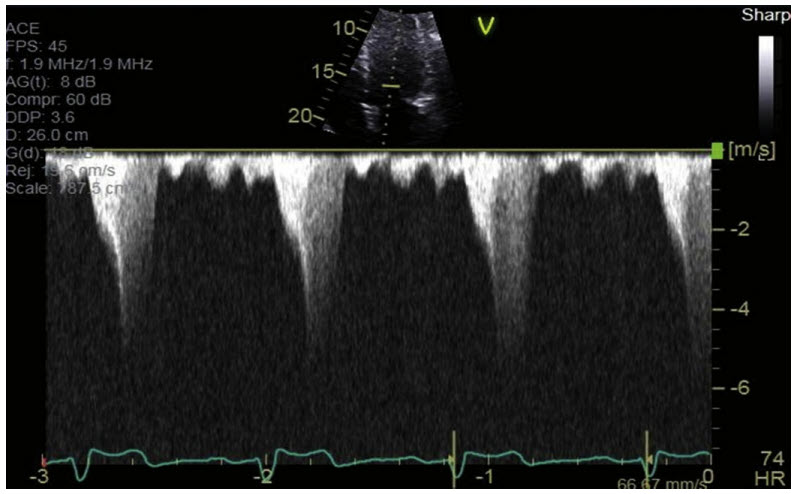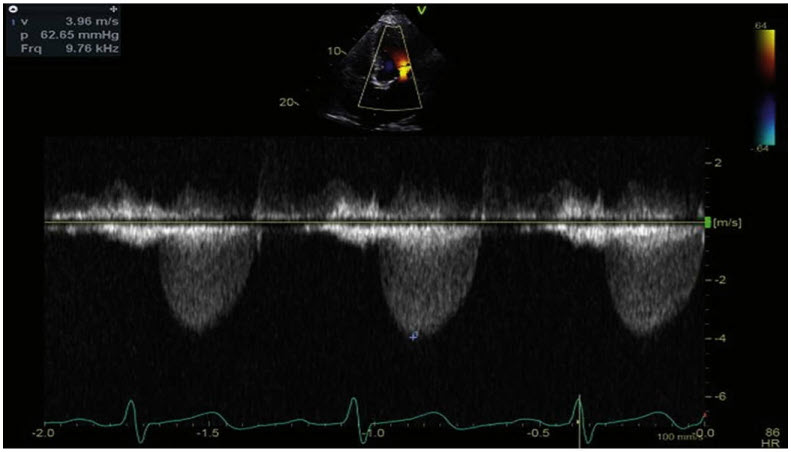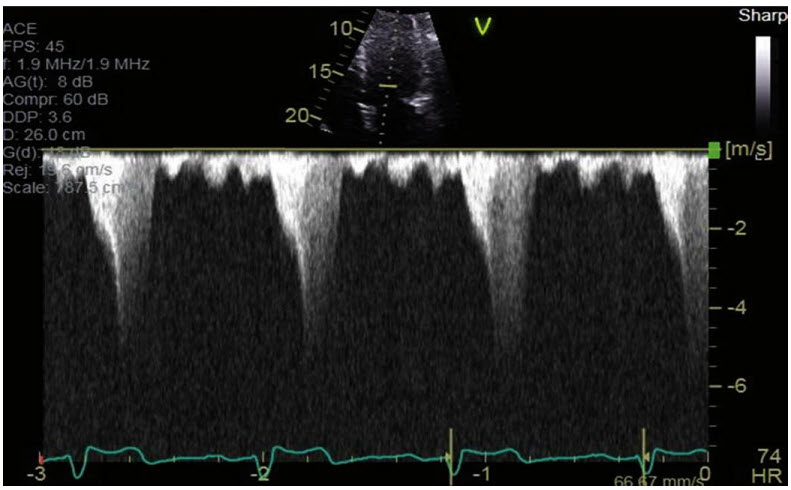Question 9#
A 78-year-old female presents with a femur fracture following a fall. She is persistently hypotensive in the ICU before surgery for open reduction internal fixation. Transthoracic echocardiography demonstrates the following continuous wave Doppler waveform:

What is the most likely diagnosis?
A. Aortic stenosisB. Subaortic membrane
C. Aortic insufficiency
D. Hypertrophic cardiomyopathy
Correct Answer is D
Comment:
Correct Answer: D
The left ventricular outflow tract gradient of hypertrophic cardiomyopathy is characteristically dagger-shaped. The waveform has a convex to the left orientation initially, which switches to concave to the left on the initiation of obstruction. This concave to the left orientation occurs because of the increased acceleration across the outflow tract, which is progressively narrowing (outflow obstruction). This increased acceleration does not occur with a subaortic membrane because the subaortic membrane causes a fixed and not dynamic obstruction. The gradient waveform through the aortic valve in patients with aortic stenosis is symmetric and demonstrates a convex to the left formation until the peak velocity. Severe aortic insufficiency may cause increased gradients as well, because of the increased flow through the aortic valve, which is the sum of the flow from the left atrium and the regurgitant flow from the aortic valve. According to the modified Bernoulli principle (4V2 , where V is peak velocity), this increased velocity will increase the transvalvular pressure gradient.


Transthoracic apical 5-chamber view with continuous wave Doppler. Difference between fixed obstruction of the left ventricular outflow tract due to aortic stenosis and dynamic obstruction of left ventricular outflow tract in left ventricular obstructive hypertrophy.
Reference:
- Sherrid MV, Wever-Pinzon O, Shah A, Chaudhry FA. Reflections of inflections in hypertrophic cardiomyopathy. J Am Coll Cardiol. 2009;54:212-219.